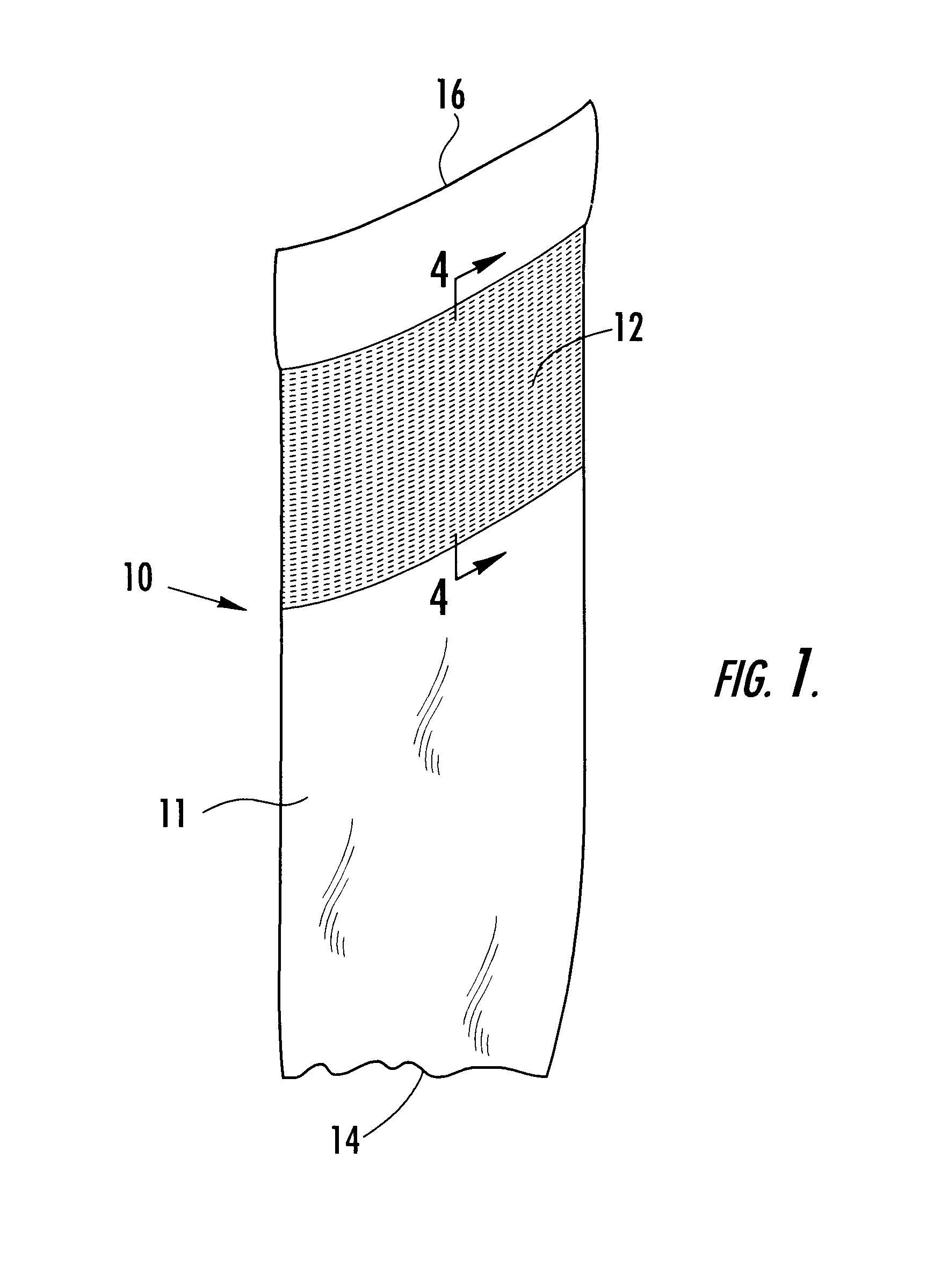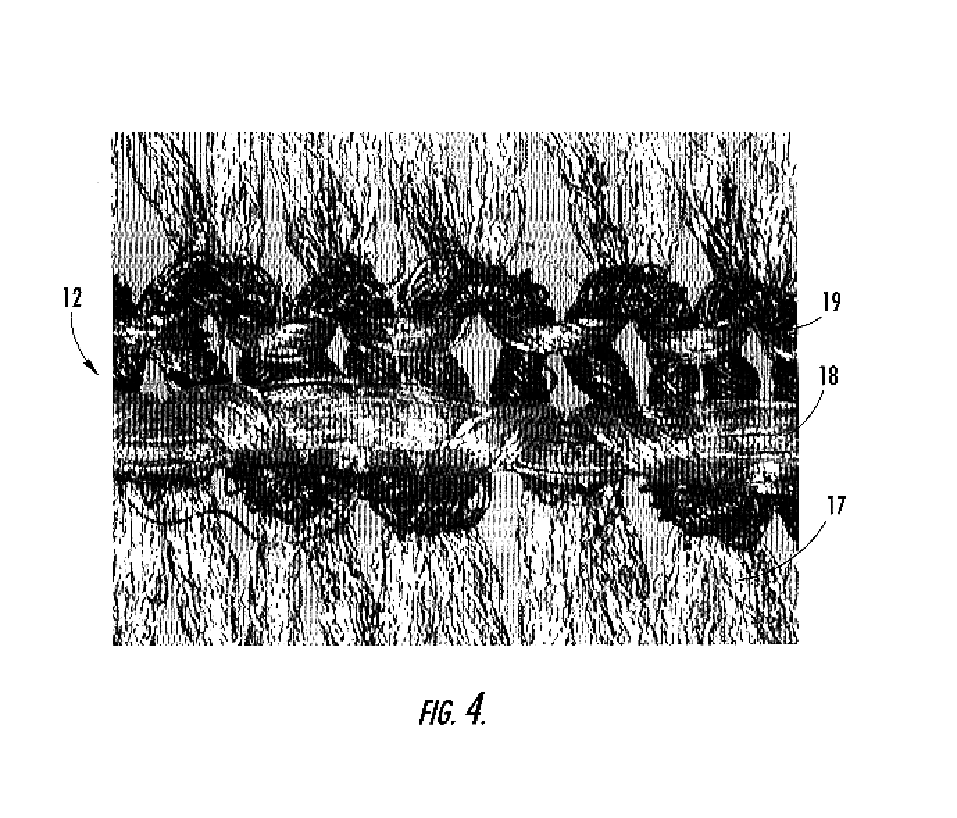Anti-slip garment
- Summary
- Abstract
- Description
- Claims
- Application Information
AI Technical Summary
Benefits of technology
Problems solved by technology
Method used
Image
Examples
example 1
A therapeutic stocking of the present invention was knit with a jersey knit structure on a conventional circular knit hosiery machine. The leg yarn was nylon. The inlay yarn was bare spandex. The upper portion of the stocking contained a high friction yarn made of spandex. The covered locking yarns were knit in a 2×1 tuck float selection as shown in FIG. 4.
The leg portion of the stocking exerted a compressive pressure of from 18 mm Hg at the ankle and gradually decreased to 8 mm Hg at the upper thigh.
Slippage tests on the garments were conducted as follows: an upper portion of a garment was donned over a cylinder with the diameter corresponding to limb girth. When the garment was pulled from the cylinder by the tensile testing machine, the maximum force necessary to start the garment moving was recorded. This force is a measure of the resistance of the garment to slide. The lower the force the easier it is to slide.
Comparison of the Properties of Sewn and Knitted Anti-Slip BandsRela...
PUM
 Login to View More
Login to View More Abstract
Description
Claims
Application Information
 Login to View More
Login to View More - R&D
- Intellectual Property
- Life Sciences
- Materials
- Tech Scout
- Unparalleled Data Quality
- Higher Quality Content
- 60% Fewer Hallucinations
Browse by: Latest US Patents, China's latest patents, Technical Efficacy Thesaurus, Application Domain, Technology Topic, Popular Technical Reports.
© 2025 PatSnap. All rights reserved.Legal|Privacy policy|Modern Slavery Act Transparency Statement|Sitemap|About US| Contact US: help@patsnap.com



